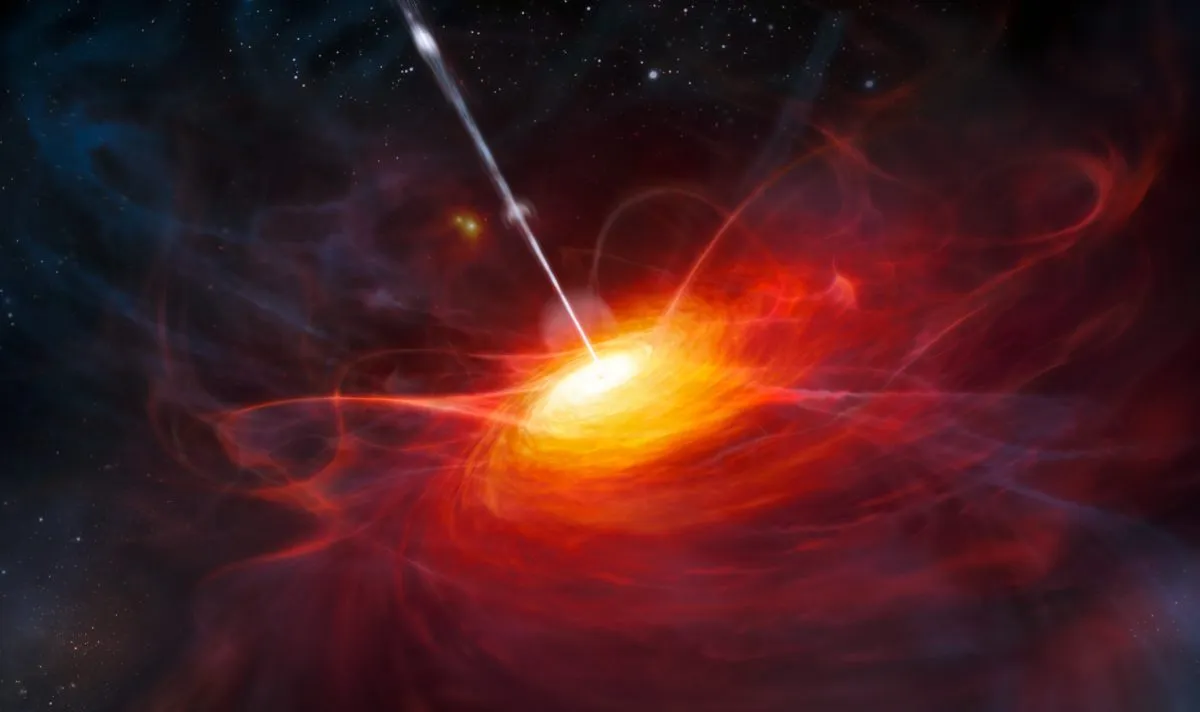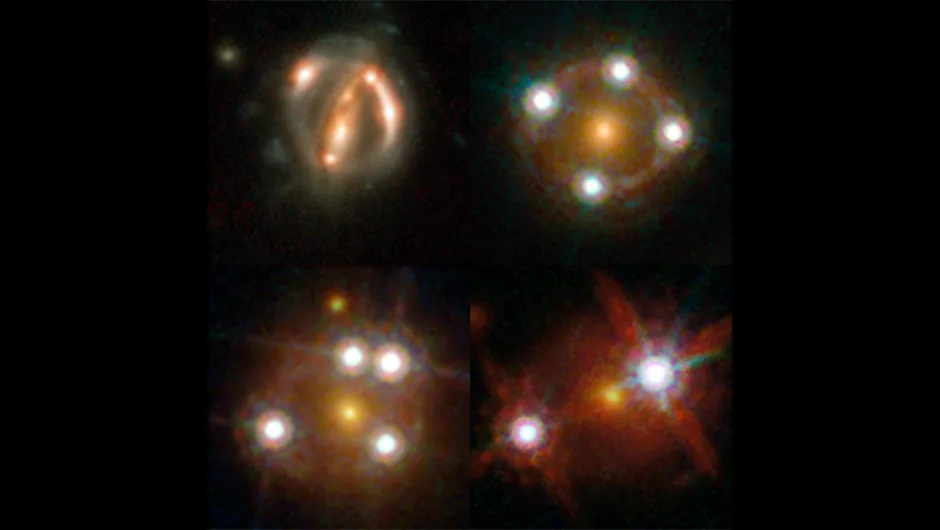Astronomers believe there are supermassive black holes at the centre of every massive galaxy in the Universe.
And while black holes have a name for being cosmic vacuum cleaners, sucking up everything that comes in their path, this is not strictly true.
Black holes can actually accrete material from their near surroundings, usually gas or dust.

In some cases, the powerful gravitational forces involved serve to heat up this material, resulting in intense radiation being emitted.
These extreme objects are known as active galactic nuclei, and quasars are the brightest and most powerful examples of them.
But what powers quasars?
Astronomers are still unsure, but Dr Jonathon Pierce, a researcher at the University of Hertfordshire who specialises in galactic mergers, active galactic nuclei and radio astronomy, believes merging galaxies could be the answer.
We spoke to Dr Pierce to find out more.

What makes quasars such mysterious objects?
Supermassive black holes are roughly the size of a solar system. This is very small relative to a full galaxy, which could contain hundreds of millions to trillions of stars.
There’s lots of gas in galaxies, but the mystery lies in how this can get down to the central black hole regions to provide fuel for a quasar.
One of the leading ideas is that when galaxies collide, the net effect is to throw a large amount of material towards the galactic centres, an attractive means of getting fuel to the black hole.
How do astronomers study quasars?
Quasars and active galactic nuclei can emit across the full electromagnetic spectrum, from X-rays or gamma rays all the way to radio waves, so there are many ways to study them.
We have amazing telescopes operating at different wavelengths.
There are two main approaches: you can look at triggering – what sets off or ignites a quasar – or you can look at the effects caused by feedback, where the energy output from the quasar impacts gas and dust within the galaxy.

What approach did your team use?
We focused on triggering, and particularly on galaxy mergers.
We imaged a large sample of quasar-hosting galaxies with enough sensitivity to pick up on faint, distorted structures that indicate whether a galaxy is or has been going through a merger.
We also looked at a group of non-quasar galaxies imaged in the same way; these galaxies otherwise had very similar physical properties.
When we looked at the two groups, we saw that the quasar group showed signatures of mergers around three times more often than the non-quasar group.
This provides strong evidence that mergers are important for triggering quasars.
What are some other theories of quasar formation?
The merging galaxy theory is the most popular, but the problem has been finding evidence.
Even within our sample, not every quasar galaxy had signs of mergers, so there’s got to be something else that can cause quasar activity.
One theory is that gravitational structures within spiral galaxies (spiral arms or bars, for example) could channel gas towards the centre.
There is also the idea that in the early Universe, at larger distances away from us, there may have been giant gas clouds within galaxies that could have collided and thrown material towards galaxy cores.

What do quasars tell us about the Universe?
Quasars are the most powerful objects in the Universe, so they’re extremely interesting.
The sheer amount of energy output by quasars can greatly disturb the gas in a galaxy and so its ability to form new stars.
We want to understand what happens throughout a galactic life cycle, and this effect means that quasars could influence their evolution.
Quasars can also be detected at large distances because they can emit light at a comparable level to a whole galaxy.
Instruments like the James Webb Space Telescope can pick up on them, pushing the boundaries of how far back we can see and allowing us to learn more about the early Universe.
What’s next for your investigation?
We want to confirm that if we used a sample selected in, for example, the X-ray or infrared, our results still hold.
It’s a question of verifying that mergers are important for igniting all quasars, regardless of how they’re selected.
This interview originally appeared in the July 2023 issue of BBC Sky at Night Magazine.
